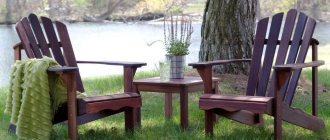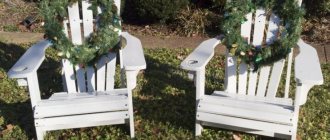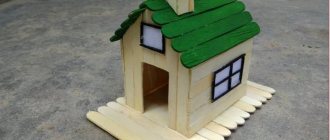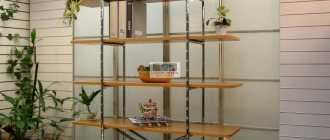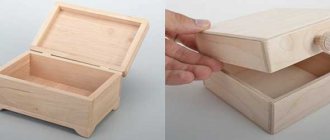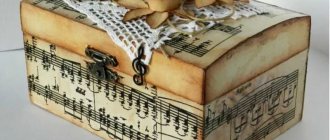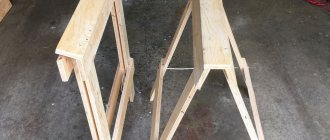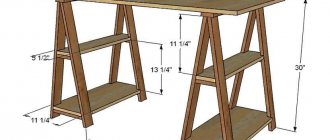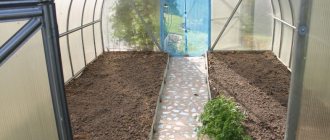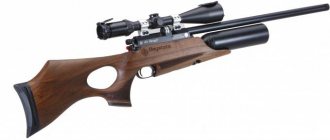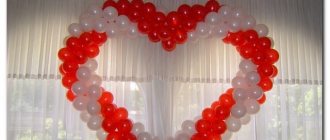When building a residential building, many processes must be performed at height, and therefore it is impossible to do without reliable scaffolding. The best solution is to make scaffolding yourself, then you won’t have to pay rent or waste time transporting the structure. They come in wood and metal, and depending on the material, the assembly technology has certain differences.
DIY scaffolding
Selection of lumber for scaffolding
Pine boards and beams are used to make scaffolding. This is explained simply: it is the cheapest, is always available in any warehouse and is available in various sizes. When choosing softwood lumber, their grade is taken into account (according to GOST 8486). This is important because, for example, you will have to overpay for first-grade boards, while third-grade lumber will call into question the reliability of some elements of future forests.
Optimal from the point of view of availability and strength is second-grade lumber. It is these boards and beams that are best used for the construction of scaffolding.
In practice, this means that lumber must meet the following criteria:
- have no more than three knots per 1 linear line. m (the knots should not be located in the middle of the board);
- mushroom core spots and stripes are allowed no more than 20% of the total area of lumber;
- up to 4 resin pockets per 1 linear m.
These are not all varietal characteristics, but from them you can visually determine the category of the material, and what is more important, they directly affect the structural reliability of the structure being built.
About choosing fasteners
As for fasteners, they are usually faced with a dilemma - nails or self-tapping screws. For the construction of wooden scaffolding, the best option would still be to use ordinary (smooth-bodied) nails. They are made of “mild” low-carbon steel, due to which they better withstand static and variable loads, which especially often occur on scaffolding. To put it simply, they may bend, but not break.
Self-tapping screws are more convenient. At least from a practicality point of view. They significantly speed up the assembly of the structure, they make it easier to accurately position the fixed parts, while they provide the same quick and easy dismantling of the structure (with minimal damage to the lumber). But given the fact that self-tapping screws are made of hardened steel, and their working fluid has a relatively small diameter, such fasteners are less resistant to shock or variable loads and often break.
To a greater extent, this problem is characteristic of oxidized screws (black) and to a lesser extent – anodized (yellow and white).
When making homemade scaffolding, as a compromise, you can use both types of fasteners: loaded nodes can be fastened with nails, and less critical ones with self-tapping screws. The length of the nails for loaded scaffolding elements is selected in such a way that when hammered, their ends protrude by 2-3 cm. After this, they are bent across the fibers and sunk into the wood.
Scheme
The diagrams will help you design your own scaffolding:
Basic elements of scaffolding
Wooden scaffolding diagram
Scheme of wedge scaffolding
Scheme of cross scaffolding
Scaffolding diagram envelope
Frame scaffolding diagram
Tura tower assembly diagram
Scaffolding attachment point
Did the article help you?
Construction of scaffolding for construction
The average person who wants to figure out how to assemble scaffolding will find many options and methods. Despite this, the equipment for almost any type of scaffolding will be standard, and it will include:
- Vertically located racks that can withstand heavy loads and transfer them to the ground surface.
- Diagonal ties, with the purpose of strengthening the skeleton of the structure and enhancing its rigidity indicators.
- Horizontal jumpers, the purpose of which is to lay flooring boards on them.
- Directly the flooring, consisting of boards capable of holding a large load.
All of the above is usually supplemented by the following elements:
- fencing (railings) protecting workers from the risk of falling;
- persistent slopes that prevent the possibility of scaffolding overturning;
- ladders for transition between tiers.
Construction trestles
There is another simple way to make mobile lightweight scaffolding with your own hands - make identical trestles onto which crossbars are placed at a certain pitch, which will serve as both a ladder and a support for the flooring. Flooring boards should be laid on the cross members. This option is good because it is ideal for covering a house with siding. The sheathing will take place from the bottom up and the height will need to be changed all the time, and there is no way to lean or attach the structure to the wall. For this reason, construction trestles are the best option.
Sometimes they make one stand on one side vertical and without tilt. This will make it possible to install them closer to the wall, and then the flooring will be located conveniently for work. This is an excellent option for painting, caulking and preventative treatment.
Advantages and disadvantages of wood for scaffolding
We analyze the features of wood and compare it with metal scaffolding.
pros
- The main advantage is the ease of assembly. To join prefabricated elements, you do not need a welding machine or other professional equipment. No special skills required. Anyone who knows how to use a hammer can handle the job. Mounting a metal base is much more difficult. It takes practice to weld a seam correctly. It is impossible to learn how to use an electrode from photos and video instructions. Renting or purchasing models with screw connections is not always possible.
- You can use ordinary boards and beams as blanks. The tower can be easily constructed from available materials. The only requirement for blanks is their reliability. Often, excess building materials left over after repairs and pallets used during transportation and storage are used.
- Upon completion of the repair work, the frame is disassembled and the parts are used as needed. Steel tubes are more difficult to adapt for household needs.
Minuses
- Greater flexibility compared to metal. Flooring laid on a frame made of profiles or rods will sag underfoot.
- Metal is stronger, so to give the beam base stability and rigidity, you will have to make it more massive.
- One of the disadvantages is the fire hazard. Even after treatment with fire retardants—compositions that impede combustion—the parts maintain a flame.
- All elements are attached to nails and screws, which weaken the edges, so it is not recommended to use the array more than twice.
Elements of homemade scaffolding
- Supporting frame - all other parts are attached to it.
- Flooring - it can support the weight of one or more people. To make it more convenient to work, tools and materials are dragged upstairs. The total load is several hundred kilograms.
- Stairs to the lower tier and between tiers.
- Fences.
- Stiffening ribs, which are spacers located vertically and diagonally.
- Stops are diagonal beams that support the platform. Their bottom rests on the ground, their top on the platform or base.
Options for assembling homemade structures
Towers on four supports - to increase the surface, they are connected together. The base is a frame made of boards or beams. This method allows you to create multi-tiered structures and ordinary two-meter pedestals. It is often used when you need to reach the roof or the third floor.
A wall is sometimes used as supports located on the inside of the frame. Nails do not leave noticeable marks on unpainted or unfinished surfaces. Any cladding after such an intervention will have to be changed or repaired.
A-frame trestles consist of two homemade stepladders, on which flooring is laid on top. Suitable only for low-rise buildings and are mainly used for finishing. The design is simple and unreliable. It is advisable to nail down the horizontal platform with nails - otherwise it will have to be constantly adjusted. It is quite narrow and designed for only one person. There are no railings or steps. They climb up using a stepladder or ladder.
To assemble such wooden scaffolding with your own hands, drawings are not needed, but quality control of lumber is still necessary.
Extension scaffolds - they are also called Armenian. Instead of a four-legged frame, diagonal holders are used here. The bottom rests on the ground, the top rests on a corner fixed to the wall of the building. Boards perpendicular to them are nailed to the holders. One side of them is attached to the wall, the other serves as a base for the work surface.
Shelves that differ from Armenian rafters in the method of fastening. They do not have a central diagonal holder.
The load is carried by a system of perpendicular beams. The vertical row is nailed from below to the wall, the horizontal row is located on top at a right angle to it. The horizontal board, together with the flooring, is held in place by boards that form an acute angle with it. The shelves are designed for light loads. After them, noticeable marks from wide nails, anchors or self-tapping screws will remain on the surface. Without a diagonal holder, the thickness and number of fasteners will have to be increased.
Rules for constructing a frame
First, prepare the soil on which the scaffolding will stand. Then they begin to install the scaffolding from the profile pipe.
Preparing for installation
It is necessary to compact the soil well where the scaffolding support posts will be installed, and provide drainage in case of rainy weather. It is better to prevent water from flowing under all supporting elements so that the soil under them does not erode.
Installation
The procedure for installing walkways from a profile pipe is as follows:
- Assemble vertical staircase posts. To do this, horizontal crossbars are mounted to the supports to form a ladder.
- Next, the intermediate racks are assembled. They differ from staircases only in the absence of steps. Only the horizontal crossbars are the same.
- Vertical posts are secured with side struts.
- After mounting and installing the stairs, horizontal supports are installed and the flooring is laid on them.
- Then, in the same sequence, the parts of the second floor, third, etc. are assembled.
When assembling scaffolding with your own hands, follow the drawing.
How to choose a professional pipe, how many pipes will be needed
For vertical racks, it is advisable to use profile pipes with a side of at least 40 mm. These can be pipes 40 × 40, 40 × 60 or 40 × 80 mm. For horizontal crossbars, you can use corrugated pipe 40 × 40, 40 × 30, 40 × 20 or, in extreme cases, 30 × 30 mm.
Some suggest using a profile pipe with a side of 20 mm. I do not recommend doing this, since the thin profile pipe has a small fastening area, and the side horizontal supports, together with the flooring on which the workers and building materials are located, are fixed with only four connections.
The rungs of the staircase posts are made from a profile of the same size. If they are thin, then bringing the building material onto the flooring will be extremely inconvenient.
If the size 40 × 20 is chosen for the steps, then it is better to mount them flat, with the wide side parallel to the ground. But the profile pipe for the side horizontal supports, on the contrary, has the narrow side facing the ground so that it does not bend. By the way, this is the advantage of a profile pipe compared to a round one - it is more resistant to bending.
We recommend reading: Do-it-yourself restoration of a wooden staircase
For side braces or side diagonal braces, a 20 × 20 mm profile pipe is sufficient. The amount of material depends on the height for which the walkways will be designed, the number of intermediate struts and the span length used - 2 or 2.5 m. The standard width is 950 mm for a 1 m deck.
For the option described below, you will need 10 m of profile pipe 80 × 40 mm, 4 pieces of 2.5 m each. For horizontal crossbars you will need 8.65 m, 4 pieces of 2.16 m of profile pipe 40 × 20. Diagonal crossbar length 2, 85 m is the same standard size as the horizontal ones, but it can be thinner.
The steps are made from a 40 × 20 mm profile pipe; you will need 12 of them. 1 m long. In order for the distance between the supports to be 950 mm, they must be recessed into the square holes of the racks. For metal flooring you need a sheet of 2 × 0.95 m with a thickness of at least 4 mm.
How to assemble metal scaffolding with your own hands
To replicate a convenient and compact design with your own hands, I suggest an option with a height of 2.5 m racks made from a profile pipe. They are suitable even for interior construction work where the ceiling height is more than 2.5 m. When used externally, these walkways are suitable for almost any one-story house. They are easy to install or dismantle with your own hands, or move to another place. They are shown in the photo above.
Required tools and materials
To mount scaffolding from a profile pipe, it is better to use an autogen or semi-automatic machine, because it is almost impossible to make a high-quality connection with a simple inverter. Horizontal crossbars, as I wrote above, are subject to heavy loads. Therefore, you need to burn holes where the crossbars or steps will be inserted.
The connection is then scalded until a reliable fastening is obtained. To do this, it is better to use gas welding or semi-automatic welding. But it’s even better to make square holes using a drill and a punch. This option is preferable.
You will need a grinder, a tape measure, and a metal marker. Made of material - 10 m of profile pipe 80 × 40 mm and 23.5 m - 40 × 20 mm, metal sheet 4 mm thick and 2 × 0.95 m in size. Can be made from 2 pieces 1 × 1 m by cutting or bending the edges with your own hands.
Drawings and diagrams
The scaffolding, the diagram of which is shown in the drawing, is made of profile pipes 80 × 40 mm and 40 × 20 mm.
A crossbar with a metal profile deck is shown in the figure below. There are plates welded on the edges - they will prevent the sheet from sliding off the supports.
Step 1. Preparing the spacers
Blanks for spacers are cut from pipes with a diameter of 15 mm: the length of horizontal ones is 96 cm, diagonal - 2 m. After this, cuts 6 cm long are made at the ends of two-meter tubes and flattened. This will make it easier to attach the spacers to the supporting posts.
Preparing the spacersPreparing the spacers
Step 2. Making adapters
To build up scaffolding, you will need connecting elements - adapters. They are made from profile pipes: 25x25 mm pipes are cut into pieces 30 cm long, and 8 cm long blanks are cut from 30x30 mm pipes. Short blanks are put on long ones and welded in the middle to prevent shifts.
Adapters
Step 3. Frame assembly
Racks
Two vertical posts are connected to each other by horizontal struts, welding them every 30 cm. The result is a frame in the form of a ladder. The second frame is assembled in the same way. Square plates 70x70 mm are cut out of sheet metal and welded flat to the lower ends of the support posts. Thanks to this, the section racks will not sink into the ground, although on soft soils dense wooden planks are additionally laid under the metal plates.
Step 4. Section installation
Assembly of the structure
Two frames are installed vertically, one opposite the other, and diagonal struts are tried on. Mark the fastening points with a marker, then drill holes for the bolts in the posts and spacers. Connect all the parts together and check with a level that the upper crossbars are horizontal. If the structure is skewed, you will have to additionally adjust all the elements, otherwise it will be difficult to stand on the scaffolding.
Step 5. Making the flooring
Assembly diagram
Flooring boards can be laid in two ways - along the length of the section and across. For transverse flooring, horizontal pipes are bolted to the sides of the structure at the level of the upper struts. For longitudinal flooring, take boards at least 2 m long, knock them down along the width of the sections, and reinforce them from below with transverse bars to prevent deflection.
To ensure that the flooring does not move during operation, a metal U-shaped profile should be secured to its ends according to the thickness of the spacer. To do this, lay the finished shield on the scaffolding and mark the line from below with a marker where the horizontal spacer touches the boards. Markings are made in the same way at the other end of the shield. Next, take a profile 17-20 mm wide, cut it to the width of the flooring and screw it with self-tapping screws to the boards on the marked lines. Now, when the flooring is laid on the scaffolding, the spacers will be inside the profile, which will not allow the boards to move.
Painting scaffolding
It is needed not so much for beauty as to prevent metal corrosion. Therefore, I advise using acrylic or alkyd paint. Before painting, it is advisable to treat the product with an anti-corrosion solution, wash off the dirt with a solvent, and wipe the scaffolding with a rag. It is advisable to paint all welded parts in 2 layers.
If you paint it with light paint, then any elements of corrosion will be clearly visible. Therefore, they can be noticed in a timely manner and re-processed: painted or repaired with a welding tool.
Drawings and dimensions
Wooden scaffolding must be assembled according to drawings, which are drawn up taking into account the features and dimensions of the facades and interior spaces. For self-assembly from wood, attached scaffolding is best suited because it has good stability and does not require a lot of time for installation.
For them, you can use third-grade wood without defects, which can then be recycled for firewood after completion of the work.
The maximum length can be no more than 6 meters, otherwise such a structure will be difficult to move along the facade or indoors. It is also necessary to take into account that scaffolding should be located at a distance of no more than 15 cm from the outer wall. When carrying out interior work, such structures should be located at a distance of no more than 10 cm from the wall.
Here are drawings of different types of scaffolding structures:
The simplest are considered to be attached scaffolding, which are used when covering the facade of a low-rise building with siding, when lining gables. When carrying out plastering work, finishing the facade with stone or facing bricks, it will be necessary to assemble more durable scaffolding structures.
The attached scaffolding consists of several elements:
- racks;
- lintels on which the boardwalk is laid;
- spacers and stops that give the scaffolding rigidity and strength;
- fencing in the form of wooden railings.
If you plan to climb to the top of the wall, you will need to use stepladders and ladders so that you can climb to the desired level of the wall. The dimensions of scaffolding depend on the size of the walls next to which they are installed.
It is not recommended to make structures that are too large, as they will be difficult to move along the walls.
Features of making wooden and metal scaffolding with your own hands
Before you start preparing parts for assembly, you should make a schematic drawing and put on it the main dimensions of the structure.
There is no need to fantasize here, since construction practice has already determined the optimal dimensions of scaffolding:
- maximum height of the structure - 6 meters;
- distance between racks from 2.0 to 2.5 meters;
- The width of the working floor is 1 meter.
Ergonomics has established that maximum productivity is achieved when the builder’s hands during work are 30-40 cm below chest level. Therefore, jumpers for installing the first flooring must be placed at a height of 40-50 cm from the ground level. This will save you from having to put together low scaffolding.
It is better to provide fastenings for the second level flooring at a height of 180-200 cm. The third flooring is placed at a level of 360-400 cm.
If you decide to make a structure from boards, then buy the following set of lumber and fasteners in advance:
- For cutting racks and thrust braces - timber with a section of 10x10 cm or boards with a width of at least 10 cm and a thickness of 5 cm.
- Spacers, ties and railings can be made from 30-gauge edged boards.
- For the flooring and the lintels on which it will lie, boards 4-5 cm thick will be required.
When choosing between nails and self-tapping screws, you should remember that nails are more difficult to remove when dismantling scaffolding. Self-tapping screws, on the contrary, are quickly unscrewed from wood with a screwdriver. However, they are worse at breaking than nails, since they are made of brittle hardened steel. Therefore, for the manufacture of small scaffolding, we can recommend the use of nails, and for long and tall structures - self-tapping screws.
Scaffolding from boards is assembled in the following order:
- on a flat area, parallel to each other, lay out 4 racks of timber or boards, cut “to size” according to the height of the scaffolding;
- the racks are connected by horizontal jumpers on which the working flooring will be laid;
- the two resulting “ladder” frames are placed vertically one against the other and connected with diagonal and horizontal ties;
- a flooring made of boards is placed on the horizontal lintels and secured;
- the scaffolding is fixed on two side bevels;
- Railings are nailed to the racks, the ladder is placed and fixed for climbing.
If there is a need to install two or more sections of wooden scaffolding, then they can be tied together with wide sections of boards, stuffed onto adjacent racks. To prevent nails from splitting short boards, drill holes in them before nailing.
Scaffolding made from profile pipes is similar in design to wooden ones. The difference between them is the use of adapters. They are used to increase the number of storeys of a metal structure.
A set of blanks for assembling one section includes the following elements:
- Profile pipe 30x30 or 40x40 mm for racks and lintels (4 pieces of 1.5 m and 4 pieces of 1 meter).
- Thin-walled round pipe with a diameter of 20 mm (4 pieces of 2 meters each for diagonal ties).
- Profile pipe 25x25 mm or 35x35 mm (8 pieces of 10 cm each for the manufacture of adapters and bearings). To make railings, you can take the same pipe - 1 piece 2 meters long.
- Steel plates 10x10 cm, 2-3 mm thick (4 pieces) for thrust bearings;
- 10 bolts with nuts and washers for connecting the diagonal ties together and securing them to the frame posts.
The assembly of a single-level section of metal scaffolding consists of several operations:
- Scaffolding posts are rigidly fixed to the assembly panel (OSB sheet) with clamps (high precision when working with metal is a very important factor);
- horizontal jumpers are welded to the racks;
- adapters from pipe scraps are inserted into the upper ends of the racks 5 cm and fixed by welding;
- having removed the racks with jumpers from the assembly board, they are turned over 90 degrees and in this position are again fixed to the board with clamps;
- the ends and middle of thin-walled pipes intended for diagonal bracing are flattened with a hammer and holes for bolts are drilled into them;
- Having tightened two diagonal ties in the middle with a bolt, they are placed on the racks and the places for drilling holes are marked;
- the couplers are fixed to the racks with bolts and tightened with nuts;
- holes are drilled on posts and railings for bolted connections;
- plates (thrust bearings) are welded to pipe sections;
- the assembled structure is placed vertically and thrust bearings are inserted into the lower ends of the pipes;
- Flooring from “magpie” boards is laid on the side lintels.
Helpful advice: to prevent longitudinal displacement of the flooring, you need to screw 30x30 mm steel corners to its lower part at the point of contact with the lintels.
Diagonal ties must be fastened on one side of the scaffolding, and horizontal ties on the other, so that they do not interfere with each other during assembly.
If the installation of scaffolding is carried out with the extension of a section of the third tier (4.5 meters), then in its racks it is necessary to make holes for attaching a profile pipe of a thrust bevel, which protects the structure from falling.
In the lower and upper parts of the racks of each section, it is necessary to drill holes for bolted connections with other sections (when extending the scaffolding in length).
Video on the topic:
Manufacturing process
Initially, you should put together the correct frame with your own hands. In most cases, it is more rational to use attached scaffolding, which will require less lumber. In order to correctly make home-made structures, which you can then simply attach to the wall, you should adhere to installation technology that will help you assemble wooden scaffolding yourself.
In order to build a reliable structure where you can work safely on the extension for finishing work, you must adhere to a certain scheme.
Frame
Before starting work on assembling the frame, the site should be leveled and, if necessary, drained so that the finished structure does not wobble during work. On a flat area it is easier to install vertical frame posts, under which you do not have to place bricks and cuttings of boards.
The first to install are 4 vertical posts, for which timber measuring 10x10 cm or thick boards 4-5 cm wide are used. The drains are cut to height and fastened together using horizontal bars or short boards. First you need to assemble the sides of the frame on the ground, after which they are lifted and fastened with parallel elements. Racks for the frame, for better stability, are better made in a trapezoidal shape. For example, the lower strut of one sidewall can be made 1.2 meters long, and the upper one 1 m long.
- When assembling the sides of the frame on the ground, it is better to work together. If the frame assembly is carried out by one person, then first you need to strengthen the internal spacer on the wall.
- There should be several paired racks. They are a support for the flooring, which diverges in different directions. The stand can be single. In this case, its length should not be more than 4 meters.
- To make the structure stable, you need to make diagonal struts on each side of it, which will act as stiffeners and prevent the scaffold from swinging.
Flooring
When the scaffolding frame has been assembled, you can begin installing the panel flooring, which is made from boards 4-5 cm thick. When laying the flooring, you should remember that there should not be large gaps between the boards. The length of one span of flooring should not exceed 3-4 meters if the thickness of the boards is 4-5 cm. For thinner boards the length should be no more than 2 meters.
Hatches and ladders
To climb to the upper tiers, you will need to make a ladder with steps measuring 5x5 cm. The interval between the steps is selected individually for the person who will work on such a ladder.
If the scaffolding is two-tiered, then you need to make a hatch to climb to the second floor. It is usually done from the side. A hatch in the center will interfere with work. A ladder is nailed to the hatch, which will be used to climb to the second floor of the scaffolding.
Attached scaffolds
This element helps to lift containers with working compounds to the upper tier and for the finishers themselves to climb. It is also assembled from boards independently. The scaffolding rests against the ground at one end and against the wall at the other. Most often, frame or attached structures are used, which are considered the most reliable. They are based not on a frame, but on a frame, which increases their strength and ensures safe movement on the stage.
For their manufacture, a beam measuring 5x15 cm and a board 3-4 cm thick are used. All wooden parts are fastened with nails.
A support is made from two boards 1 m long. One element is mounted vertically and looks down, the second to the side. The parts are connected at right angles. The flooring is laid on this base in increments of 1-2 cm. Then, to strengthen the structure, jibs made of diagonal beams are attached to the formed corner. Their underside should rest against the ground. To fix the lower part of the scaffold, a stake is driven into the lower part. Its upper part is nailed to the base.
In the space created by the sides of the corner, panels are placed on each side, which will ensure the rigidity of the structure. Flooring is placed on top.
The construction of wooden scaffolding takes little time if you follow the proposed scheme. The better and more reliable the structures, the faster the finishing work will be carried out. The safety of those who have to work at height directly depends on scaffolding. When carrying out construction or repair work in low-rise buildings, you cannot do without such structures. Therefore, you need to know how to quickly and correctly assemble such a structure from boards on your own.
Video description
The sequence of creating scaffolding from boards with your own hands, the design features and the assembly procedure are discussed in detail in this video:
Typically, production is carried out section by section, and if necessary, the entire structure is extended or raised by adding additional sections and connecting them using boards.
Important! When assembling wood scaffolding and using nails, it is recommended to pre-drill holes for fasteners. This will significantly increase labor costs and installation time, but is guaranteed to prevent the board from splitting during operation.
Construction trestles
There is another option on how to make scaffolding quickly and easily. The same type of “goats” are made - a product made from knocked down supports and flooring laid on top. Essentially, these are mini scaffoldings with a simplified design.
Such a product is relevant for private households, for example: for servicing low buildings or as a stand under a staircase in order to “extend” it.
The ideal option for using trestles is to cover a building with siding. The work is carried out from the ground to the roof, the height gradually changes, and fastening the scaffolding to the wall or simply supporting it is impossible.
Variant of folding construction trestles made of wood Source master4dom.ru
It happens that one side of the trestle is made in the form of a vertical stand, not tilted. This is done to allow installation directly against the wall at a minimum distance. This will greatly facilitate work during preventive surface treatment, painting, caulking, etc.
Weaknesses of wooden structures
The most important problem is dismantling and subsequent storage of the product. Disassembling a wooden frame upon completion of the work is quite labor-intensive, and storage requires appropriate conditions so that the structural elements do not deteriorate under the influence of climate or pests.
Secondly, the design feature greatly complicates the process of moving scaffolding from place to place during work. Since quick disassembly and reassembly is impossible, it will be necessary to move all the structures, and this will require the involvement of a certain number of people.
And finally, the relatively low height of the product. It is quite difficult to assemble a structure that is high enough on your own so that it has the necessary reliability.
The process of assembling scaffolds
- To install lightweight wooden scaffolding with your own hands, you will need the same set of tools. We will use beams 5x15 cm and boards 3-4 cm thick as materials. We fasten all elements with nails. If necessary, the scaffolding reaches the third floor, but it will not be possible to create a second tier. They do not need a flat, dry area, since the main part of the structure is in a “suspended state.”
- We knock together supports from two elements 1 m long. To do this, we place them at right angles, fix them and mount them on the wall. The vertical one is directed downward, the horizontal one is directed to the side. Together they form the base for the decking. They are placed in increments of 1-2 m. Jib beams are inserted into the corner - diagonal beams, the bottom side resting on the ground. The bottom is fixed by driving a stake into the ground, the top is nailed down or tied with wire.
- The space between the sides of the corner is boarded up with shields on both sides. They serve as stiffening ribs and additional fastening for the diagonal holder. A shield is placed on top.
One section can support a person's weight. To prevent the racks from moving to the side, install side holders or nail the diagonals together with additional jumpers. One way is to hang the base with long anchors that can support heavy loads. It is possible that the holes from them will have to be sealed with cement mortar.
How convenient is the tower-tour?
One of the main auxiliary devices on any construction site is a tower. It is mobile and easy to move as work is carried out in individual areas.
Such towers can be assembled and dismantled in literally 20 minutes by several workers. The towers have a fairly rigid structure, which ensures their reliability and stability.
The technical characteristics of the tower allow you to perform work at high heights and quickly move to another site. Often a tower-tour becomes a necessary device in the construction business.
What materials can be used to make a tower?
A tour made by handicraft can have the form of a collapsible or non-removable structure. Of course, the collapsible version is more convenient to use. When disassembled, it can be easily and compactly transported to various construction sites.
Disassembly and assembly will not take much time. And failed structural elements and fastenings are easy to replace.
Do you know that it is not difficult to make such a tower yourself from leftover metal elements at a construction site and not spend money on buying a tower - a factory-made one.
To make a tower you will need the following materials:
- For tower racks, profile pipes with a diameter of at least 30 mm are applicable.
- For stiffeners you will need a pipe with a diameter of 15 mm. or a corner with a shelf width of 30 mm.
- For jumpers, you can use a steel pipe with a diameter of 25 mm.
- You can fit wheels on one side; they will ensure easy movement of the tower.
The procedure for making a tower - tours
First, from a pipe with a diameter of 15 mm. you need to make 2-meter sections according to the number of planned sectional tower platforms. Each section will require four such segments. The ends of these pipes are flattened for ease of fastening to the main racks of the tower.
The next step will be preparing the tower racks. For this purpose, the profile is 30 mm. the pipe is cut into sections of 1.5 and 0.75 m. Small sections will be used to make the legs of the structure, and pipes one and a half meters long will be steps.
When manufacturing a non-separable structure, all elements are reliably welded by electric welding with careful checking of the quality of the seams. The distance between the pipes of the steps should not exceed 30 cm. As a result, wheels are mounted to the main racks.
The manufacture of a collapsible tower is a more complex process and will require special fastening units (clamps or bolts). In addition, in order to attach structural elements with bolts, many holes must be drilled in the pipes.
Tour tower, description of the device.
The mobile tower is a spatial tower-type structure made of flat frames with three steps.
Parallel frames are installed in the dumbbell pipes and form a section. To ensure the rigidity of the structure itself, the sections are connected to each other with ties, which are attached to dumbbell locks. The lower sections are installed on two bases, which are connected to each other by a volumetric diagonal.
The bases have four screw supports and four wheels. Wheels are used to move the tower. Screw supports compensate for unevenness of the supporting surface. The tower must be installed using screw supports so that the wheels do not touch the supporting surface by 2 mm.
The tower has a set of decking, which consists of two types - solid and with a hatch.
To ensure stability, the tower can be equipped with stabilizers, which are attached with clamps to the main structure of the tower.
Safety precautions during operation.
The tower must be installed strictly vertically using screw supports. The deck of the tower must have a flat surface.
The tower can be equipped with stabilizers to ensure its greatest stability. If there is a danger of overturning due to wind load or other factors, the tower must be strengthened to the building with guy wires as close to the top tier as possible. It is necessary to comply with the requirements of SNiP Sh-4-80 “Safety in Construction” and GOST 24258-88.
Instructions for assembling the tour tower.
Types and components of metal scaffolding
When building a house from stone or building blocks, metal scaffolding is more suitable. They are able to withstand any load. They are less popular only for the reason that in many regions wood is still the cheapest type of building materials. The second point, which is often decisive, is that after dismantling the wooden scaffolding, the boards can be put to work - used in further construction. And metal parts should gather dust in the shed.
But metal scaffolding also has its advantages. When disassembled, they do not take up much space.
Owners of wooden houses still have to use them periodically: the log house requires maintenance, so scaffolding is needed every two to three years. In this case, it is more practical to use metal rather than wooden ones. They are easier to assemble, more durable and stronger.
All metal scaffolding has the same shape - vertical posts connected by crossbars and slopes. The only difference is the way the parts are attached to each other:
- Pin scaffolding. They are called so because the crossbars and posts are connected using pins. Pieces of pipe or perforated disks are welded on the racks, and bent pins are on the crossbars. This system is very easy to assemble and can withstand heavy loads. Pin scaffolding for buildings of simple shape is very easy to implement; going around bay windows and projections is much more difficult.
- Clamps. For racks and crossbars, round pipes are used, which are fastened together using specially designed clamps. The system turns out to be very mobile and movable; you can easily get around any curved facades. The downside is the limited load capacity and height (according to GOST - no higher than 40 meters).
- Frame. Frames of the same size are welded from a round or rectangular pipe. They are connected to each other by transverse pipes and jibs. They have a modular structure and can be easily expanded both in height and in length. They have a certain step in length - 1.5/2/2.5/3 meters, in height one section is usually 2 meters, the standard depth is 1 m. Some frames have wheels for easier movement on a flat surface. Connection of flag-type elements - pins with a slot into which the flag is inserted are welded on the frame. Holes are made in the crossbars and slopes. The elements are put on a pin and secured with a flag. Sections are built up using connecting pipes of smaller diameter, welded to the frame posts on one side. With this method, it is important to have perfectly selected pipe sizes so that there is no backlash.
- Wedges. Although generally similar, the designs differ in the form of the connection. On the jays with a certain pitch (usually 2 meters), perforated discs are welded. Special cleft-mouth type locks are welded onto the jumpers at both ends. The locks are fixed to the disk using a specially shaped wedge. Such scaffolding connects and disconnects quickly, has high mobility, and can be used on facades of complex shapes.
When making metal scaffolding yourself, pin scaffolding is most often used. They are the easiest to implement, however, they are only good on rectangular facades; to bypass more complex shapes, you have to weld additional tubes.
Video description
A step-by-step option for creating metal scaffolding yourself can be seen here:
Assembling elements into a finished section
Two finished frames are installed in such a way as to connect them with diagonal struts, by applying which a marker is used to mark future attachment points. Holes for bolts are drilled along the marks. After this, the structure is assembled and checked for correct connections (no distortions). If irregularities are identified, the work is redone, because the exploitation of such forests is unacceptable.
Making flooring
The boards can be laid in length or along the width of the section. Using the transverse option will require additional installation of horizontal pipes on the sides of the structure at the level of the upper spacer pipe. The option with longitudinal flooring is possible if there are long boards (at least 2 meters), which will need to be knocked down and reinforced with transverse bars to prevent deflections.
Painting the finished structure
Metal scaffolding is used many times, so it is important to treat it well to protect it from corrosion, rust, etc. Therefore, after manufacturing and testing for strength, all parts of the product are carefully sanded, cleaned, primed and painted.
An example of homemade metal scaffolding Source poligon.3dot.ru
"Pros and cons"
- Firstly, scaffolding is not a small scaffolding, but a rather bulky structure that will need to be stored somewhere after the need for it disappears.
Wooden scaffolding, of course, can be disassembled later, but the work is labor-intensive, and the boards, if you don’t need them in the near future, also need to be stored somewhere. Do not forget that wooden scaffolding is assembled using nails, not screws, so the boards will no longer be completely intact. In addition, when working on scaffolding, the wood often gets dirty with mortar or paint.
- Secondly, non-prefabricated scaffolding is designed to work maximum at the second floor level (from the ground). At higher altitudes, the operation of self-made scaffolding becomes dangerous.
- Thirdly, scaffolding is required quite rarely (only for repairing the facade of a building), so the assembly and disassembly of such a temporary structure is not profitable in terms of the time spent on this work.
- Fourthly , scaffolding often has to be made long (for example, at least 6 meters for installing siding). Accordingly, their weight increases, and moving homemade wooden scaffolding to the other side of the house becomes a problem even for three or four people.
DIY wood construction
Before you make scaffolding from boards yourself for a private house, you will need a diagram that should display the following values:
- boundary height not exceeding 6 m (only for wooden structures);
- distance between supports, not higher than 2.5 m;
- the width of the flooring, which is usually 1 m (enough for convenient work).
The optimal entry-level height will be a distance of half a meter, which will allow the builder to work comfortably. The next tier is located two meters higher, and the third - no higher than 4 meters. Distances can be changed depending on the types of work performed and the dimensions of the building itself.
Before building scaffolding from boards, you should purchase the necessary materials and fasteners:
- rack beam (100x100 mm) (can be replaced with a board with similar parameters);
- board necessary for the manufacture of ties, supports and fences (up to 30 mm thick);
- 40mm board for flooring;
- fastening hardware in the form of nails or screws.
Recommendation! When choosing fasteners, it is necessary to take into account that the use of nails will increase the construction time of scaffolding, but will cost less. In addition, pulling out nails during dismantling will be much more problematic. The use of self-tapping screws significantly reduces the time required to create a structure. As a rule, low structures are fastened with nails, and long and tall structures are fastened with self-tapping wood screws.
Insulation of a building facade using wooden scaffolding Source allsiding.ru
How to do without scaffolding
If you don’t plan to carry out the façade work yourself (but are planning to hire a construction team), then you don’t have to think too much about scaffolding, since builders usually come to the site with their own scaffolding and scaffolding.
However, after construction is completed (and after some time has passed), scaffolding may be needed for minor facade repair work. Can this be avoided?
Certainly. And first, make sure that the facade of your house does not require repairs for many years. To do this, it is enough to use facing bricks when constructing walls. Now it is produced by many manufacturers and in a fairly wide range of colors.
But other facing materials (such as siding, plaster and others) will periodically require your attention and, accordingly, additional costs, since you will not be able to make scaffolding (buy or rent) for free.
Making a sofa
The sofa bench is suitable for a summer house or garden plot. For production, one or two Euro pallets and several wooden blocks 5-6 cm thick will be enough. A hammer drill, a screwdriver, bolts, screws, washers and metal corners will be useful for the work. First you need to make the base of the bench.
Saw the pallet into 2 unequal parts. A standard pallet is assembled from 7 boards, divide it so that there are 4 boards on one part and 3 on the other. The wide part will be the seat, and the narrow part will be the back. You can add another half of the pallet to the bottom if you don’t plan to screw the legs.
Fold the backrest and seat together at a 90 angle and tighten tightly with screws.
Strengthen the fastening with wooden blocks attached diagonally from the upper corner of the backrest to the lower corner of the seat. You will get some kind of armrests. If desired, make low legs from the remaining boards and reinforce them with metal corners
The decoration of such sofas gives room for creativity. Unleash your imagination! Thanks to the decorative coating, the product becomes durable and shiny. Cover the wood with stain, oil or varnish - this will highlight the texture of the wood. Water-based paint also applies smoothly. Complete the furniture with carving, burning or decoupage. The technique of “aging” wood adds a noble appearance to the products. We wish you success!
What's better?
The first question that a home owner has during construction or renovation concerns the choice of material for the structure. Of course, it’s hard to argue with the fact that metal is always a favorite. However, what is captivating about wood is its flexibility, the ability to make do with simple tools that are in any “gentleman’s kit” - a hammer, drill, saw and screwdriver.
Metal in this case is much more complex. To get the most durable structure, you need a welding machine and skills to work with it.
Such a structure will have to be stored somewhere; it will require quite a lot of space. Of course, high-quality scaffolding can be rented out, but it is unlikely that many owners will be impressed by the possibility of such income. It is for these reasons that preference is often given to traditional wood, a material that is light in every sense.
Another important point when choosing a material is economic feasibility. Many people believe that it is logical to give preference to metal only in one case: if it can be “obtained” for free. If you add to the price of hardware the cost of fastening elements, as well as welding work, then homemade scaffolding will cost more than factory scaffolding. At least purchased wooden products.
Now a few words about wood, which should not have serious defects. The ideal material is considered to be spruce boards, characterized by minimal weight and the same number of knots. However, they are not always available on the farm, which cannot be said about pine. This is a second potential candidate, but it needs to be tested first.
To test, elements 2-2.5 m long are placed on low brick pillars, then stand on the middle of the board and jump several times. If the board withstands such experiments without problems, then it can be safely used for the manufacture of scaffolding.
Selecting tools and preparing the workplace (wooden pallets)
Scheme of a wooden pallet with dimensions.
To make a pallet with your own hands, you need to have or buy the following things: a tape measure, self-tapping screws, a pencil, a hacksaw with blades for cutting wood, a screwdriver. To create even the simplest design you need a workbench.
If it is not there, then you can use a simple country bench for sawing and marking pine beams and boards. Before work, place all the necessary materials and tools in front of the workbench - this will save you a lot of time.
Screws or nails?
This is another point that needs to be addressed, since the strength of the structure depends on the fastening elements. Naturally, wooden scaffolding is not intended for long-term use. When the work is completed, they are simply dismantled. However, in this case, it is not the ease of dismantling that plays a role, but the reliability of the fasteners.
For the manufacture of wooden structures, it is recommended to use self-tapping screws, but only if it does not involve devices for working at relatively high heights. In this case, nails are preferable. They are made of soft metal, so they may bend, but will not break. Hardened steel self-tapping screws are the worst solution. The best are anodized fasteners, but they are not blameless, as they can also present an unpleasant surprise.
The best solution would be nails. However, there is another way. First, all parts are connected using anodized screws. If after checking no reliability problems are identified, then 2-3 nails are driven into each connection.
In order not to damage the wood, thin boards (slats) are placed under the elements, which can be easily split before the final dismantling of the scaffolding. In this case, protruding nails can be removed without any problems.
How best to use wooden pallets in the country (video)
Since the floor in the country shower was not in the best condition, it was decided to put together a slightly smaller tray. This will make it possible to lay the pallet strictly on the surface, as smoothly as possible, without any defects or problems in future use.
As you may have noticed in the photo, the floor in the summer shower is not in the best condition, and therefore we promise to tell and show in the near future how to make a high-quality screed to repair such defects.
The size of the shower at the dacha is 130x110 cm, respectively, taking into account the above, our pallet is a slightly different size - 100x90 cm.
After determining the most convenient size, simple marking using a tape measure and pencil, as well as cutting the material.
To make the pallet stable and strong, with good load-bearing capacity, we decided to install the base beams at a distance of 10 cm from each edge. Thus, the middle part of the board between the beams is 60 cm. This is quite enough so that even a person weighing 100-120 kg does not bend the pallet in the center (tested empirically).

